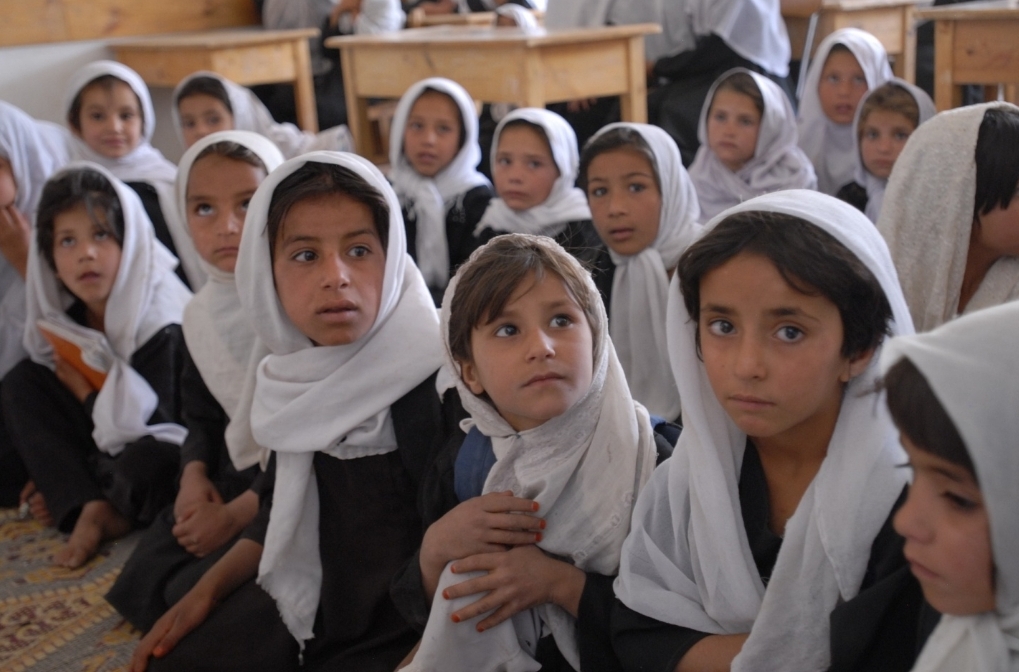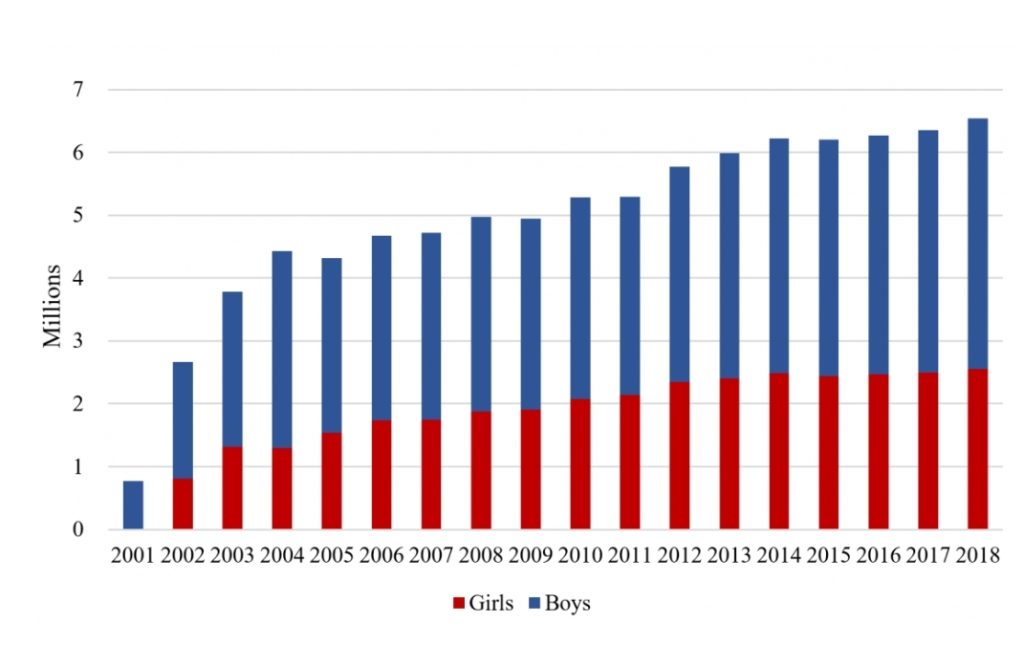UNICEF has brought in staggering data on female education in Afghanistan. According to the data, only 64% of the learners attend primary school in the country, 23% below the world average primary education attendance. Afghanistan has a country affected by political unrest and consistent conflict. One of the greatest impacts of this social unrest has been on the education of the girl child. For decades, young female learners have either been kept out of school education or offered substandard quality learning facilities.
A simple education goal – primary education for all, which has been achieved by even the most underdeveloped countries of the globe, is still a distant dream for the government of Afghanistan.
Let’s look at the challenges and progression of the female education system in Afghanistan.

Improvement Of Education From 2001 To 2023
Afghanistan has come a long way in improving its education system from what it was in 2001. Here are a few significant improvements:
Increase in the enrolment in primary education – According to the 2020 Ministry of Afghanistan’s Annual progression report, close to 10 million people were enrolled in primary and tertiary education, which is ten times the number of students enrolled in 2001; 40% of them are girls. The progress has been prodigious, especially for primary-level education. The table below shows the growth of Afghanistan’s primary school enrolment growth between 2001 and 2018.

Increase in the count of schools and teachers – Apart from the increase in the enrolment of students; there has been a sharp rise in the establishment of schools and employment of educationalists in the country. Hence more teachers are now ready to offer medical assignment help and assistance to other important subjects of education. A study by UNESCO highlights that in 2020 the number of school establishments was 20,000, which is considerably higher compared to only 6,000 in 2001.
Similarly, the count of teachers increased by 27,000 in 2003 and over 225,000 in 2020. Schools now provide academic instruction through community-based education to children from Grade 1 to Grade 3. Every community has an educational institution in its locality. Hence students don’t need to commute long distances to avail of learning opportunities available in the country.
Barriers To Education For Girls In Afghanistan
Although girls’ education has increased significantly in the past two decades, the socio-culture structure of the country remains a roadblock to pursuing education for girls. If they dream of offering nursing assessment help to the health centres in the country from their childhood days, most often, it never comes true. Here are a few barriers to female education in Afghanistan.
- Societal disapproval-
The society of Afghanistan is quite orthodox and outdated. A survey shows that one of the prominent reasons girls cannot continue their education in Afghanistan is family disapproval. Most household in the country bars women and girls from participating in societal activities including education. Apart from that, 30% of the girls in the country get married before becoming an adult. The other prominent reason that stops girls from pursuing studies is their engagement in child labour.
- Lack of female role models –
In the past decades, the percentage of female teachers has increased to nearly 36% in primary schools, but most of them are present in the cities and towns of the country. Rural Afghanistan barely has a female teacher in the locality. Hence, the small percentages of girls that attend school in their childhood often lack a role model in academic institutions. Whom they can observe and follow to get established in life or become more educated. It results in a lower number of girls attending school. Although the share of female teachers has grown substantially to 36 per cent in primary education, this number is much lower in remote and rural areas, where girls are more excluded from formal education.
Lack of sanitation –
Sanitation in academic institutions is one of the primary needs to bring a girl to school. Of 20,000 schools across 24 provinces in Afghanistan, only 40% have separate toilet facilities for boys and girls. It is one of the primary reasons adolescent girls do not attend schools since, with the onset of puberty and the menstruation cycle, a clean and private toilet becomes one of the immediate needs for students to spend long hours in the academic institution.
Future of women’s education in Afghanistan
Afghanistan is one of the poorest countries globally, with more than 50% of the population surviving below the poverty line and 23% of the citizen unemployed. Therefore, financial support from the government to enhance female education does not appear promising. Apart from that, a variety of uncertainties impede the progress of education. Some of the most common ones include:
- Uncertainty with infrastructure –
The extended conflict, unbalanced political growth and Covid 19 pandemic have made the education system of the country unsteady at present. The conflict has also impacted the reconstruction of educational institutions. Apart from that, the withdrawal of the U.S. armed forces has reduced the already limited educational resources available for girls’ education in the country, excluding the vulnerable group from academic opportunities.
- Uncertainty with Taliban education policy –
With the reintroduction of Taliban rule in the country, the future of female education remains uncertain. Co-education is banned in the country, and gender-based education is enforced. As a result, high-quality education for girls is becoming more inaccessible than before.
- Uncertainty with international aid –
With Taliban rule in place, a gap in understanding of foreign nationals and international institutions has been created between the need for female education in the country and the present government’s initiative to fulfil it. The donors get the indication to send their aid for humanitarian purposes. Still, there lies a lack of clarity for improvement in the education system, which deters them from putting their resources into the country.
Parting Thoughts
Afghanistan has witnessed a steep upward curve in female education in the past two decades. However, the present situation fails to offer any clear vision of moving uphill. Now the life of 9.94 million girls is at stake.
Unless international communities and local academic agencies take collaborative action, the accessibility to higher education facilities and participation in primary education for girls is bound to fall.
Author Bio
Rabia Beckett is a full-time writer at MyAssignmenthelp.com. She is in the publishing industry for the past 5 years and has been the author of several thriller books too.